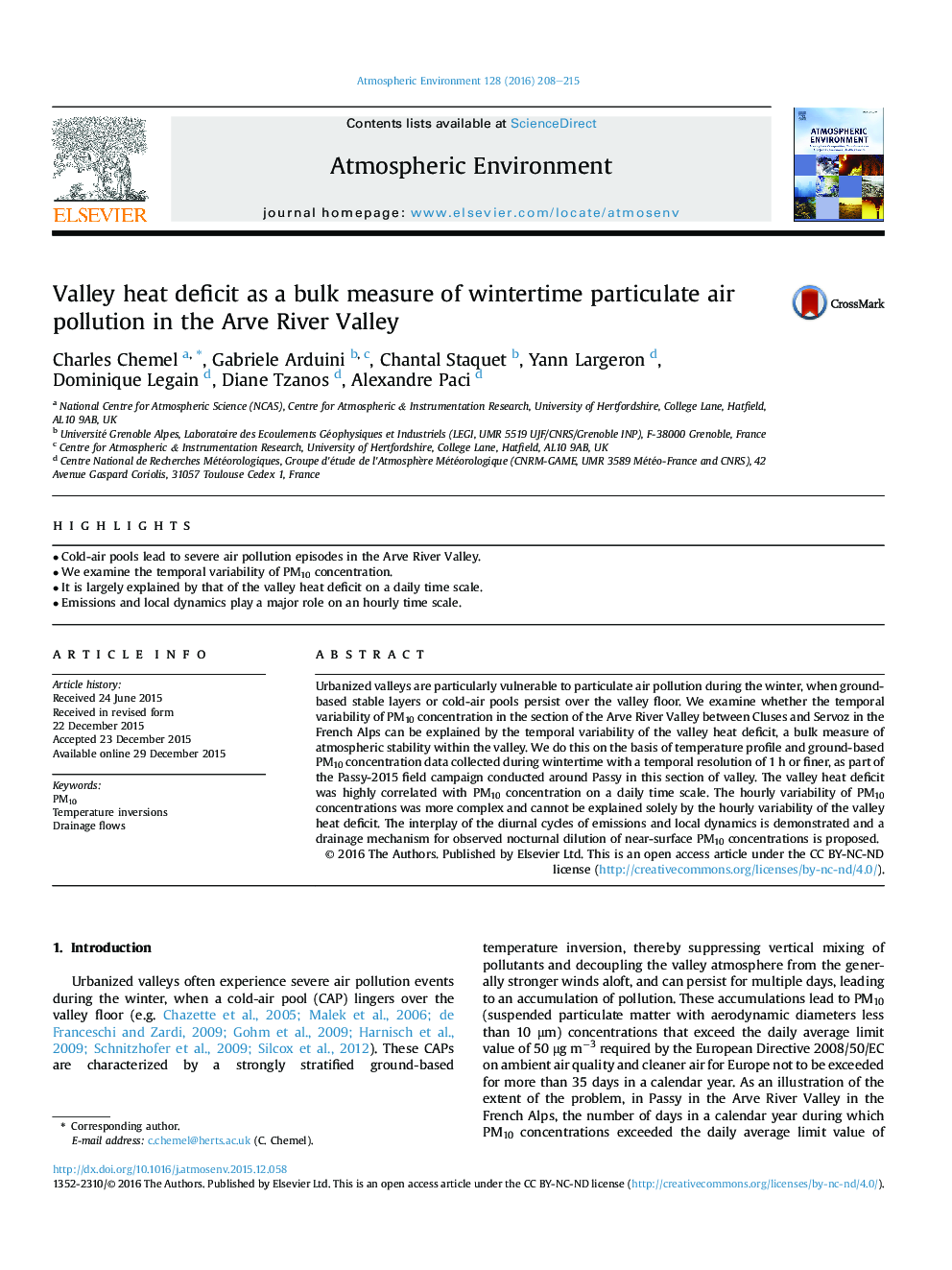| Article ID | Journal | Published Year | Pages | File Type |
|---|---|---|---|---|
| 6336748 | Atmospheric Environment | 2016 | 8 Pages |
Abstract
Urbanized valleys are particularly vulnerable to particulate air pollution during the winter, when ground-based stable layers or cold-air pools persist over the valley floor. We examine whether the temporal variability of PM10 concentration in the section of the Arve River Valley between Cluses and Servoz in the French Alps can be explained by the temporal variability of the valley heat deficit, a bulk measure of atmospheric stability within the valley. We do this on the basis of temperature profile and ground-based PM10 concentration data collected during wintertime with a temporal resolution of 1Â h or finer, as part of the Passy-2015 field campaign conducted around Passy in this section of valley. The valley heat deficit was highly correlated with PM10 concentration on a daily time scale. The hourly variability of PM10 concentrations was more complex and cannot be explained solely by the hourly variability of the valley heat deficit. The interplay of the diurnal cycles of emissions and local dynamics is demonstrated and a drainage mechanism for observed nocturnal dilution of near-surface PM10 concentrations is proposed.
Keywords
Related Topics
Physical Sciences and Engineering
Earth and Planetary Sciences
Atmospheric Science
Authors
Charles Chemel, Gabriele Arduini, Chantal Staquet, Yann Largeron, Dominique Legain, Diane Tzanos, Alexandre Paci,
